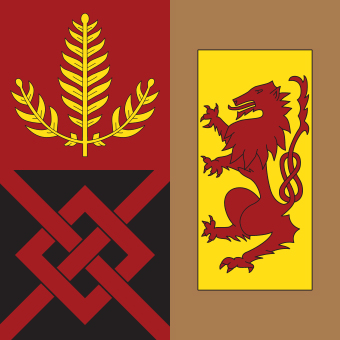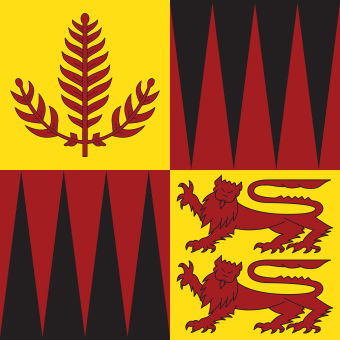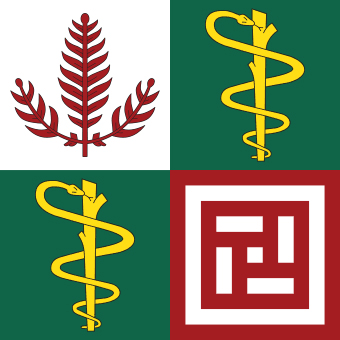Academics
Stanford's Seven Schools

Graduate School of Business
Dean: Garth Saloner
The Stanford Graduate School of Business, established in 1925, offers the two-year MBA program with about 825 students; a one-year MS in management program with 91 students; the PhD program with 131 students in residence; the six-week residential Stanford Executive Program for senior executives; some 60 Executive Education courses; Stanford Ignite, a part-time program in innovation and entrepreneurship; and joint MBA degrees with law, electrical engineering, computer science, environment and resources, public policy and education. There are about 32,000 GSB alumni worldwide. The 124 faculty members include three Nobel laureates.

School of Earth, Energy and Environmental Sciences
Dean: Pamela Matson
Research and teaching in the School of Earth, Energy and Environmental Sciences focus on meeting the needs of a growing global population while protecting the planet’s long-term life support systems. The school addresses critical sustainability challenges, including energy, fresh water, food, climate change and natural hazards such as earthquakes and volcanoes. Scholars seek a greater understanding of Earth in areas including geology, continental dynamics, and oceans and biogeochemical cycles. The school has 60 faculty, 200 undergraduates and 400 graduate students. It offers BS, MS, Engineer and PhD degrees.

Graduate School of Education
Dean: Daniel Schwartz
The Graduate School of Education enrolls about 400 graduate students and is preparing the next generation of education scholars, policymakers, entrepreneurs, executives and school leaders. The GSE’s 56 faculty draw from a variety of disciplines to produce scholarship that shapes teaching and learning worldwide; they translate research into practice through partnerships with schools, nonprofits and governments. The GSE offers the Doctor of Philosophy, Master of Arts and Master of Arts with teaching credential, as well as three joint degrees in public policy, law and business. It also offers an undergraduate program.

School of Engineering
Dean: Persis Drell
More than 5,000 graduate and undergraduate students are enrolled in the School of Engineering. The school focuses on seeking solutions to important global problems and educating leaders who will make the world a better place by using the power of engineering principles, techniques and systems. The school has nine departments, more than 250 faculty members and more than 80 laboratories, centers, institutes and programs. The school’s hub is the Jen-Hsun Huang Engineering Center.

School of Humanities and Sciences
Dean: Richard Saller
The School of Humanities and Sciences is Stanford’s largest school, awarding 63 percent of undergraduate degrees. The school enrolls 2,400 graduate students and 2,240 undergraduate students in more than 50 departments and interdisciplinary degree programs that span the humanities, arts, languages and literatures, social sciences, mathematics and the physical and life sciences. The school has more than 570 faculty members. Its graduate programs lead to Doctor of Philosophy, Doctor of Musical Arts, Master of Arts, Master of Science, Master of Public Policy or Master of Fine Arts degrees.

Law School
Dean: M. Elizabeth Magill
Stanford Law School combines classic and innovative legal education, with about 70 faculty members and 180 new JD students annually. The student-to-faculty ratio is 7.3 to 1. The school offers 21 joint degree programs in areas ranging from bioengineering to business to public policy. Eleven clinics allow students to undertake the roles of practicing lawyers, and 31 academic programs and centers and more than 20 policy practicums offer opportunities for research and policy work.

School of Medicine
Dean: Lloyd Minor
The School of Medicine, the oldest medical school in the Western United States, encourages intellectual diversity in students interested in developing a scholarly, investigative approach to problems in medicine and science and using discoveries to transform patient care. The school has 946 full-time faculty, including seven Nobel laureates; 1,353 postdoctoral scholars; 481 M.D. students; 904 Ph.D. and M.S. candidates and 1,001 residents and clinic fellows. Faculty deliver care at Stanford Health Care and Lucile Packard Children’s Hospital, where medical students also gain experience. In 2014, faculty received more than $637 million for sponsored research.
Other Academic Programs
Stanford Continuing Studies
Dean: Charles Junkerman
Continuing Studies offers about 450 courses annually, attracts about 15,000 students from throughout the Bay Area and sponsors 40 to 50 free public programs, performances, workshops and lectures. Courses range from liberal arts and sciences to creative writing to professional and personal development. Also offered is the Master of Liberal Arts Program for adults. The MLA program, taught by Stanford faculty, takes four to five years to complete.
Pre-Collegiate Studies
Pre-Collegiate Studies serves more than 3,200 academically talented middle and high school students from around the world. Offered are four year-round programs: Stanford Online High School [grades 7-12], Early College Online, Math Circles and Science Circles; and summer programs: High School Summer College, Pre-Collegiate Summer Institutes, Stanford University Mathematics Camp, Summer Humanities Institute, Stanford Medical Youth Science Program and Stanford Arts Institute. There are two annual conferences: Discovering Medicine @ Stanford and Stanford Science Conference. Call 650-721-9400.
Degrees
- Stanford offers the following degrees:
- B.A., B.S., B.A.S., M.A., M.S., Ph.D., D.M.A., M.D., M.B.A., J.D., J.S.D., J.S.M., LL.M., M.F.A., M.L.S., M.L.A., M.P.P., ENG
This page last modified Feb 27, 2016.

